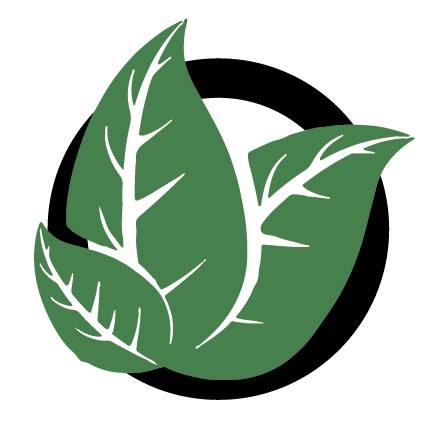SUSAN ASH | APRIL 6, 2017
Last fall, the U.S. Drug Enforcement Administration served a 30-day notice of a plan to put kratom, a botanical supplement in the coffee family, in the same category as heroin and LSD. The DEA was not prepared for the resulting massive public outcry over what amounted to a de facto ban on a product that three-five million Americans consume responsibly. Even worse, the federal drug agency ignored the fact that there was no real evidence of a kratom-related health emergency.
The backlash against the DEA was unprecedented. A petition to the White House attracted more than 140,000 signatures, a major protest was held in Washington, D.C., and when the DEA backpedaled and allowed for a public comment period, it was deluged in late 2016 with feedback from more than 23,000 Americans — more than 99 percent of whom opposed the scheduling of kratom.
But kratom — a supplement that has personally given me a new lease on life after I started battling chronic illness and became officially disabled in 2012 — remains under a cloud today and could still face a crackdown instigated by the DEA or the Food and Drug Administration. Recently, 26,000 Americans petitioned President Donald Trump to put an end to the “regulatory overkill” threatening kratom, but that may not be enough to stop the DEA and FDA from moving forward.
What could — and should — stop the DEA and FDA from proceeding is the lack of a public health crisis related to kratom. While heroin and prescription painkiller overdose deaths are a tragic and large-scale scourge imposed on America, the DEA was forced to go to considerable lengths to scrape together even the faintest pretense of a “kratom epidemic”.
How do we know that any such claim about kratom is a hoax?
The American Kratom Association asked Dr. Jack Henningfield of Johns Hopkins University, one of the world’s leading experts on drug abuse and addiction to undertake a close examination of kratom. He found that that there is “insufficient evidence” for the U.S. DEA to ban or otherwise restrict the coffee-like plant kratom under the Controlled Substances Act.
Here is what the Henningfield analysis and related commentary from AKA concluded:
“For both abuse potential and dependence liability, kratom’s profile is comparable to or lower than that of unscheduled substances such as caffeine.” That’s right — kratom is about as dangerous to you as a cup of coffee. In fact, the analysis found that kratom’s potential for abuse and dependence is as low or lower than such widely used and unscheduled substances as “nutmeg, hops, St. John’s Wort, chamomile, guarana, and kola nut.”
In the United States, there have been few reported serious side effects associated with kratom use and no reported deaths directly attributable to kratom. Just as importantly, there have been no deaths, serious adverse effects, or emergency department visits reported for children. The relative safety of kratom is consistent with several key clinical and pharmacologic properties of the substance, including its low toxicity, extremely low bioavailability (absorption into the body), and its blocking of opioid receptors that limit the possible euphoric effect and substantially reduce the risk of respiratory depression. In short, you don’t die from kratom and consuming it is not about “getting high.”
If the DEA schedules kratom as if it were heroin or LSD, it would have to do so for other botanicals, or else face objections that it is being entirely inconsistent. As the analysis notes: “For example, the botanical substances St. John’s Wort, Valerian, and Kava Kava are known to have reinforcing effects and to act as sedatives, and have been the subject of hundreds or thousands of calls to Poison Control Centers. Yet, these substances have not been scheduled, but regulated as dietary supplements. The same is true for guarana and kola nut, Yohimbine, the primary component of yohimbe extract, is an indole-containing alkaloid that is structurally similar to the active ingredient in kratom, yet yohimbe is available in the U.S. as a dietary supplement …None of these botanical substances is scheduled, despite sharing some characteristics with controlled substances; rather, all of them are adequately regulated by FDA through existing authority. Kratom, with a comparable or lower potential for abuse than these substances, would likewise be best regulated” by the FDA.
There are rules here and the DEA must meet a specific eight-part test to schedule a substance on an emergency basis. Kratom in no way “passes” this test. The AKA comment letter to the DEA notes: “Kratom does not meet the criteria for permanent scheduling under the CSA — under Schedule I or any other schedule — and DEA cannot satisfy the legal requirements for use of the emergency scheduling provision of the CSA to temporarily schedule kratom.”
So, what do we really know about kratom?
Kratom is a natural botanical supplement safely consumed by millions of Americans daily. I am one of those people. Like caffeine when used responsibly, kratom is enjoyable, safe, rarely associated with any serious adverse effects, and not prone to serious abuse. Kratom simply does not pose an imminent threat to the public health. Rather, kratom is more reasonably characterized as a dietary supplement, and could be regulated as such by the FDA.
Reasonable oversight — not regulatory overkill — is all that is needed when it comes to the coffee-like supplement kratom, which has helped me, and hundreds of thousands of other Americans, gain a new lease on life.
Susan Ash is the director and founder of the American Kratom Association.







